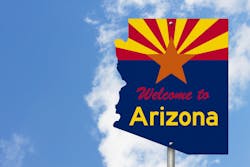A statewide program aimed at enhancing equitable access to care for rural communities in Arizona says it has completed more than 3,000 patient transfers in its first eight months, improving access to care for hospitalized Arizonans and easing the administrative burden on providers, particularly in rural areas.
The Arizona Poison and Drug Information Center at the R. Ken Coit College of Pharmacy partnered with the Arizona Department of Health Services and Blackbox Healthcare Solutions in December 2022 to launch the Arizona Resource Equity and Access Coordination Hub (AZ REACH).
The co-founders say AZ REACH was born out of the experiences of the Arizona Surge Line, a centralized transfer center that played a pivotal role in load-leveling hospitals and facilitating patient transfers during the COVID-19 pandemic. A total of 85 percent of transfer requests received during the pandemic originated from Rural Indian Health Services, Tribally Operated PL-638 and Critical Access Hospitals. To address this glaring disparity in access to care for rural Arizonans, state and federal grants were used to create AZ REACH.
"It cannot be overstated how crucial the Arizona Surge Line was in getting patients access to the lifesaving care they needed," said principal investigator Steven Dudley, Pharm.D., director of the Arizona Poison and Drug Information Center, in a statement. "These hospitals made it clear how desperately needed this was for all conditions, not just COVID. Thus, AZ REACH was born."
With AZ REACH, hospitals are experiencing improved patient transfers, allowing clinicians to concentrate on delivering essential care at the bedside rather than dealing with administrative tasks, which are now managed by dedicated AZ REACH personnel.
AZ REACH provides a framework for swift activation during hospital admission surges caused by events like mass casualty incidents, seasonal increases or potential future pandemics. For instance, it responded to the surge in pediatric hospitalizations during the previous respiratory syncytial and influenza season, assisting providers and patients regardless of the hospital they came from.
AZ REACH tracks numerous metrics such as patient demographics, required medical specialties, care levels and total transfer times. This provides a deeper understanding of the status of Arizona's healthcare system for county and state health departments and enables the early detection of brewing surges in hospitalizations. It also simplifies some of the daunting complexities of healthcare coordination that lead to worse patient outcomes.
“In underserved communities, healthcare provider shortages exacerbate the existing disparities,” said Charley Larsen, M.S.N.-L, M.B.A., R.N., chief nursing officer of Blackbox Healthcare Solutions and executive lead for AZ REACH, in a statement. “Our program strives to ease administrative burdens on emergency care providers, granting them greater time and focus at the bedside to care for those in need.”


